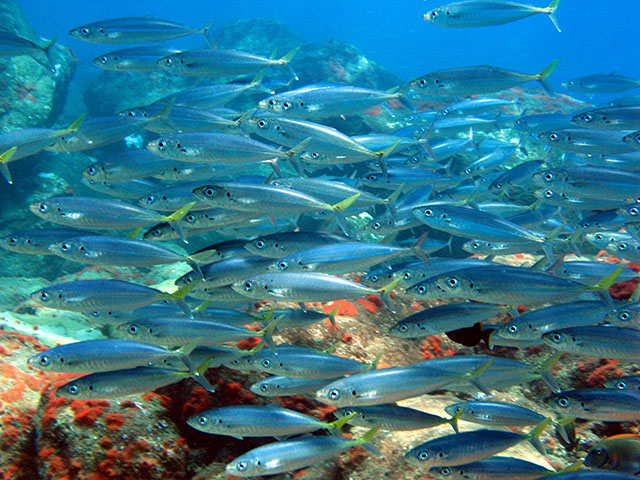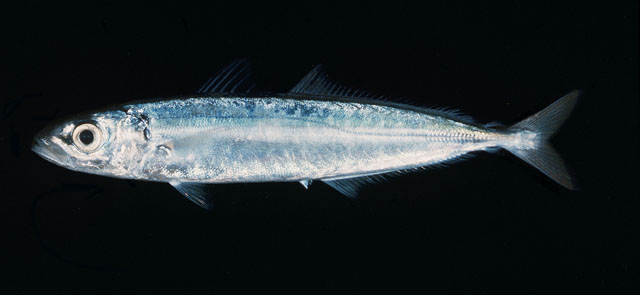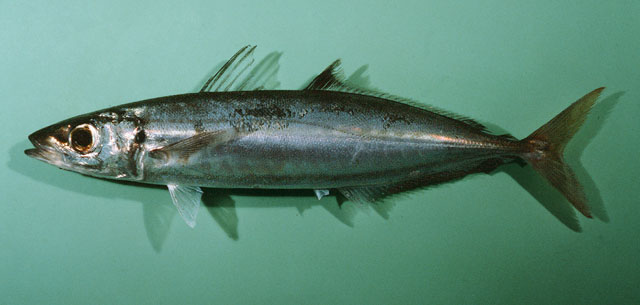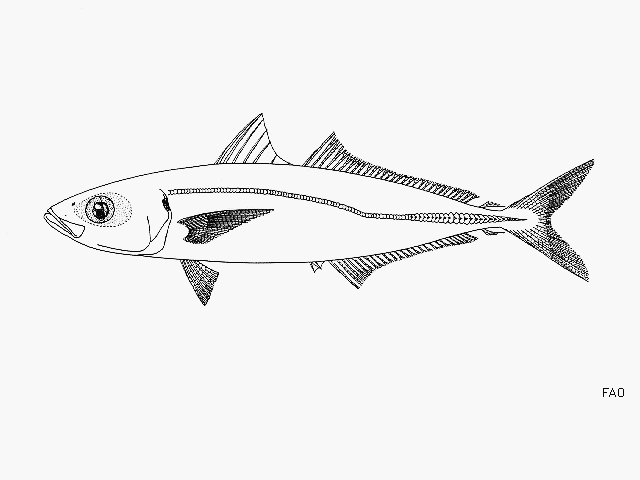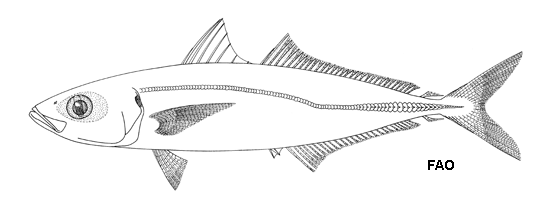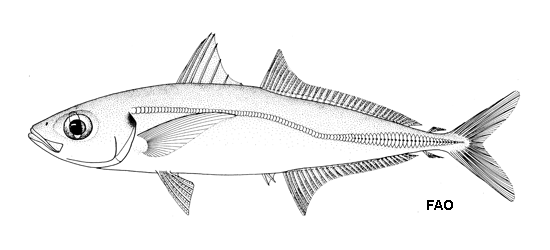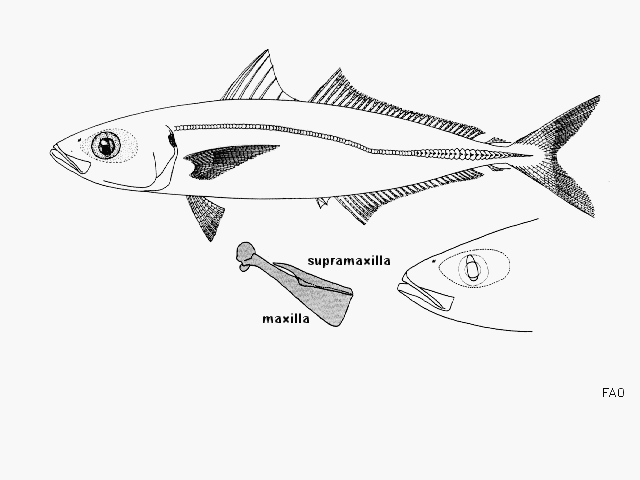Decapterus
muroadsi
(Temminck &
Schlegel,
1844)
Amberstripe scad
View all media / Upload your photos and videos
Expand all
Classification / Names
Teleostei (teleosts) > Carangiformes (Jacks) >
Carangidae (Jacks and pompanos)
> Caranginae
Etymology: Decapterus: Greek, deka = ten + Greek, pteron = wing, fin (Ref. 45335).
More on authors:
Temminck &
Schlegel.
Environment / milieu / depth range / climate zone / distribution range
Distribution
Indo-Pacific: Japan and northwestern Hawaiian Is., east and west coast of Australia, Rapa and Easter Is.; and from the Gulf of California to Peru.
Maps

Decapterus muroadsi / Native range
AquaMaps Data sources:
GBIF
OBIS
This map was computer-generated and has not yet been reviewed.

Decapterus muroadsi / Suitable habitat
AquaMaps Data sources:
GBIF
OBIS
This map was computer-generated and has not yet been reviewed.

Decapterus muroadsi / Point map
AquaMaps Data sources:
GBIF
OBIS
This map was computer-generated and has not yet been reviewed.

Decapterus muroadsi / Year 2050
AquaMaps Data sources:
GBIF
OBIS
This map was computer-generated and has not yet been reviewed.
Size / Weight / Age
Biology
Main reference
Edwards, A. 1990 Fish and fisheries of Saint Helena Island. Centre for Tropical Coastal Management Studies, University of Newcastle upon Tyne, England. (Ref. 5288)
IUCN Red List Status (Ref. 125652)
Least Concern (LC); date assessed: March 09 2015
CITES (Ref. 131153)
Not Evaluated
CMS (Ref. 116361)
Not Evaluated
Threat to humans
Harmless
More information
- Countries
- FAO areas
- Ecosystems
- Occurrences
- Introductions
- Stocks
- Ecology
- Diet
- Food items
- Food consumption
- Ration
- Common names
- Synonyms
- Metabolism
- Predators
- Ecotoxicology
- Reproduction
- Maturity
- Spawning
- Spawning aggregation
- Fecundity
- Eggs
- Egg development
- Age/Size
- Growth
- Length-weight
- Length-length
- Length-frequencies
- Morphometrics
- Morphology
- Larvae
- Larval dynamics
- Recruitment
- Abundance
- References
- Aquaculture
- Aquaculture profile
- Strains
- Genetics
- Allele frequencies
- Heritability
- Diseases
- Processing
- Mass conversion
- Vision
- Pictures
- Stamps, Coins Misc.
- Sounds
- Ciguatera
- Speed
- Swim. type
- Gill area
- Otoliths
- Brains
Estimates based on models
Preferred temperature (Ref. 123201): 14.1 - 28.1, mean 23.6 °C (based on 1345 cells).
Phylogenetic diversity index (Ref. 82804): PD50 = 0.501 [Uniqueness, from 0.5 = low to 2.0 = high].
Bayesian length-weight: a=0.01122 (0.00514 - 0.02450), b=3.04 (2.87 - 3.21), in cm total length, based on all LWR estimates for this body shape (Ref. 93245).
Trophic level (Ref. 69278): 3.4 ±0.5 se; Based on food items.
Resilience (Ref. 120179): Medium, minimum population doubling time 1.4 - 4.4 years (Preliminary K or Fecundity.).
Fishing vulnerability (Ref. 59153): Moderate vulnerability (42 of 100).
Price category (Ref. 80766): Medium; Questionable: based on ex-vessel price for species in this genus.
Nutrients (Ref. 124155): Calcium = 481 [159, 1,454] mg/100g; Iron = 4.95 [1.76, 11.62] mg/100g; Protein = 19.9 [18.5, 21.4] %; Omega3 = 0.369 [0.177, 0.790] g/100g; Selenium = 98.4 [31.3, 289.6] μg/100g; VitaminA = 15 [4, 62] μg/100g; Zinc = 1.28 [0.72, 2.35] mg/100g (wet weight);

